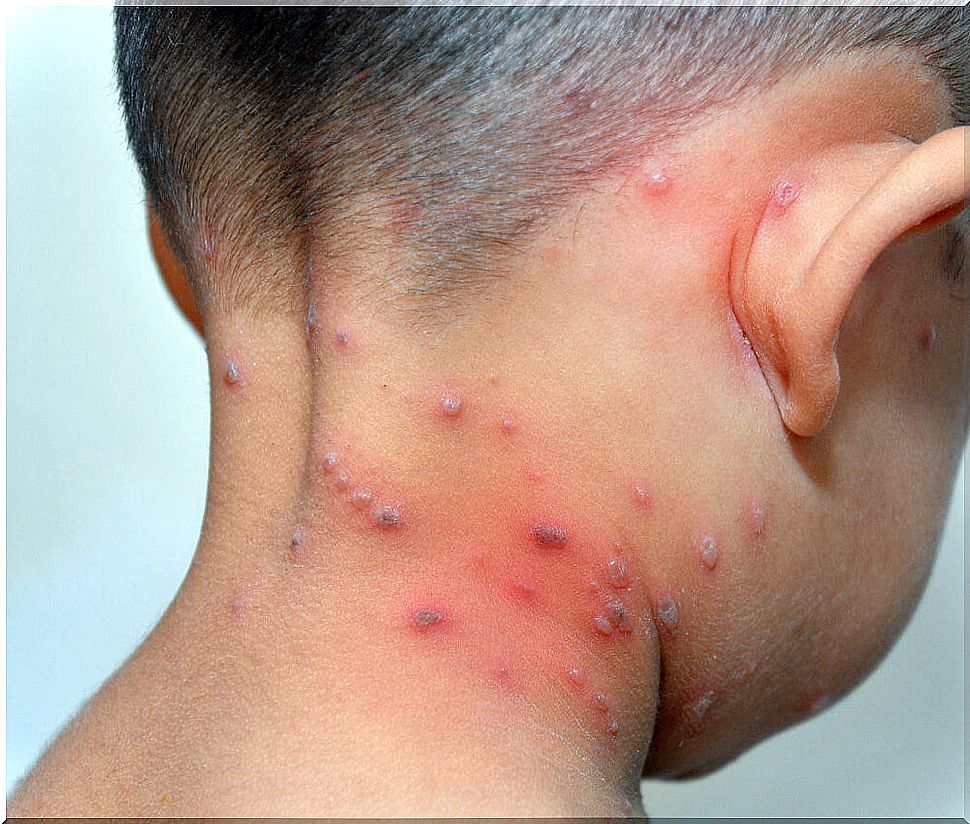Scalded Skin Syndrome: Causes And Symptoms
Scalded skin syndrome is a delicate disease that usually affects children under 6 years of age. It must be diagnosed and treated in time so that it does not have a fatal outcome.

Scalded skin syndrome is a skin condition. It occurs as a reaction to a skin infection caused by staph. Its main characteristic is the formation of blisters and the subsequent shedding of the skin.
This problem mostly affects infants or children under 6 years of age. Scalded skin syndrome is very rare in adults, unless there is a deficiency in the immune system or kidney failure.
What Causes Scalded Skin Syndrome?

Scalded skin syndrome results from a skin infection caused by bacteria from the staph family. In most cases the infectious agent is staphylococcus aureus or gold.
These microorganisms secrete a toxic substance that affects the skin. This causes the top layer of the epidermis to separate from the rest of the skin. In this way, blisters appear that burst and the skin appears scalded.
The most common is that the affected person has an initial infectious focus that goes unnoticed. Once it starts, scalded skin syndrome develops quickly. However, sometimes this happens several days after the initial infection that gives way.
This syndrome is contagious. Staph infections have increased worldwide since the 1970s. Staph aureus is estimated to be present in 30-50% of healthy adults.
What are the characteristic symptoms?
Although scalded skin syndrome has several characteristic symptoms, it is common for each child to experience them differently. The most common is that the first manifestation is fever , accompanied by redness on the skin.
It usually begins with an isolated ulcer that is crusted over. In newborns, the ulcer usually appears in the diaper area or near the belly button stump, while in older children it almost always appears on the face. In adults, anywhere on the body.
The ulcer evolves and within 24 hours it becomes scarlet red. Soon after, fluid-filled blisters begin to form. These break very easily and leave the skin moist and scalding, as if a burn has occurred. Other common symptoms are as follows:
- Pain to the touch in the affected areas.
- Shaking chills.
- Feeling of weakness
- Loss of fluids.
- Nikolsky sign. The superficial layers of the skin are detached from the deeper layers, just by rubbing them with light pressure. In two or three days, the entire surface of the skin is affected.
What treatment is there for this syndrome?

The diagnosis of scalded skin syndrome is made based on the clinical picture and the detection of the toxin. Sometimes it is necessary to do a biopsy on the skin to confirm the disease that in its first manifestations is very similar to scarlet fever, erythema multiforme, Kawasaki disease and others.
Once the diagnosis is confirmed, the usual thing is that the treatment must be carried out in the hospital. This disease is given a management similar to that applied in the case of a burn and, in fact, it is usually treated in the burn unit. The most common is that the following measures are taken:
- Administration of antibiotics for staphylococci. They are administered orally and / or intravenously, depending on the condition of each patient. Its function is to prevent any type of infection.
- Supply of intravenous fluids. The patient loses a lot of body fluids through broken skin. This requires that steps be taken to avoid possible dehydration.
- Skin protection measures. They include the use of creams and ointments to strengthen the skin’s barrier function. Moisturizers are also applied.
- Relief measures. They have to do with the application of cold compresses on the skin in order to reduce pain.
Treatment may vary, depending on the patient’s age, general health condition, severity of condition, drug tolerance, expectations, or preferences. The most common is that the skin begins to heal 10 days after starting the treatment.
How to deal with scalded skin syndrome?
If the child or adult is seen on time, the most common is that no complications arise. The most important risk is a deeper skin infection: cellulitis. It also worries that the infectious picture will worsen and reach the bloodstream, causing septicemia.
Other risks are dehydration or electrolyte imbalance. Also, fever should be properly controlled, especially in babies. If the child or adult is diagnosed and treated quickly, the outcome is usually favorable. However, scalded skin syndrome can lead to death if it is not cared for properly.
In conclusion, in the presence of blisters that generate fever and / or the other symptoms indicated above, immediate medical consultation is recommended.








